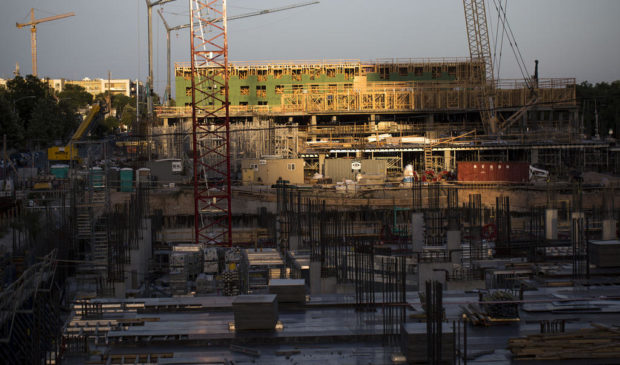Austin renters and people of color are most likely to be displaced because of gentrification
Tuesday, September 18, 2018 by
Syeda Hasan A new study from the University of Texas points to widespread gentrification in Austin, stretching from northern neighborhoods to the eastern edge of South Austin. Researchers say the groups most impacted by displacement are low-income African-American and Hispanic renters.
Jake Wegmann, a professor in UT’s School of Architecture who co-authored the study, said in a statement that the report shows “striking levels of change, including an alarming loss of low-income persons of color from several areas in Austin’s Eastern Crescent.”
The study offers a three-tiered outline to explain the process of gentrification: First, there’s a displacement of lower-income residents, then neighborhoods physically transform, and finally the character of an area is altered.
Of 200 Austin neighborhoods, the study identifies 16 that are “actively gentrifying,” and 23 more that are at risk. Researchers also looked into anti-displacement policies that other cities have adopted to try to reverse these trends.
The report ranks neighborhoods on a spectrum, looking at which areas are the most vulnerable to gentrification. Researchers considered factors including how many people in a neighborhood were renters, people of color or making less than 80 percent of the area’s median family income. In Austin, that’s $68,800 a year for a family of four.
The city of Austin commissioned the yearlong study in 2017, citing rapid redevelopment and displacement of residents. City leaders hoped to gain an understanding of the underlying causes of gentrification to help build a “necessary foundation for policy decisions” to guide future policies and manage growth.
This story was produced as part of the Austin Monitor’s reporting partnership with KUT. Photo by Gabriel C. Pérez /KUT.
The Austin Monitor’s work is made possible by donations from the community. Though our reporting covers donors from time to time, we are careful to keep business and editorial efforts separate while maintaining transparency. A complete list of donors is available here, and our code of ethics is explained here.
You're a community leader
And we’re honored you look to us for serious, in-depth news. You know a strong community needs local and dedicated watchdog reporting. We’re here for you and that won’t change. Now will you take the powerful next step and support our nonprofit news organization?







